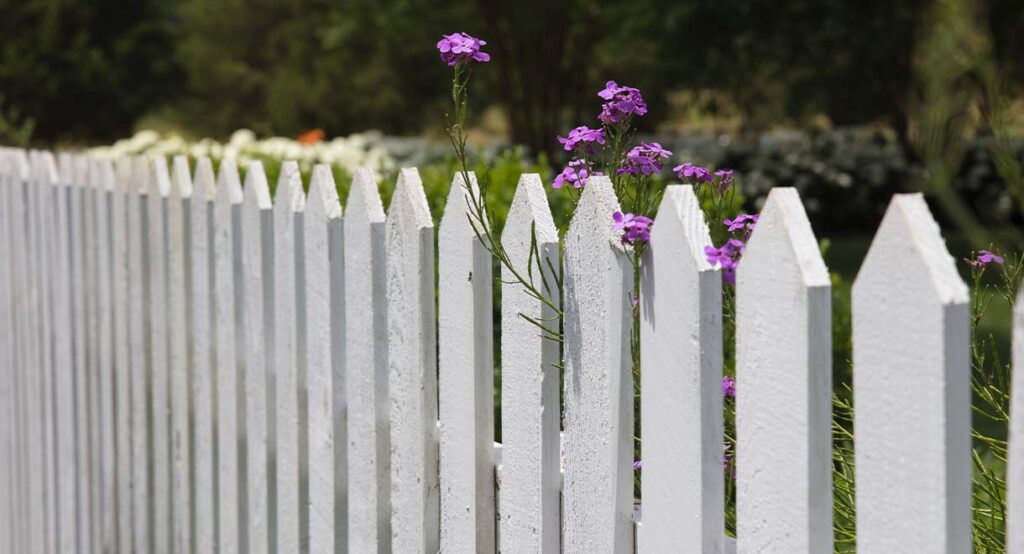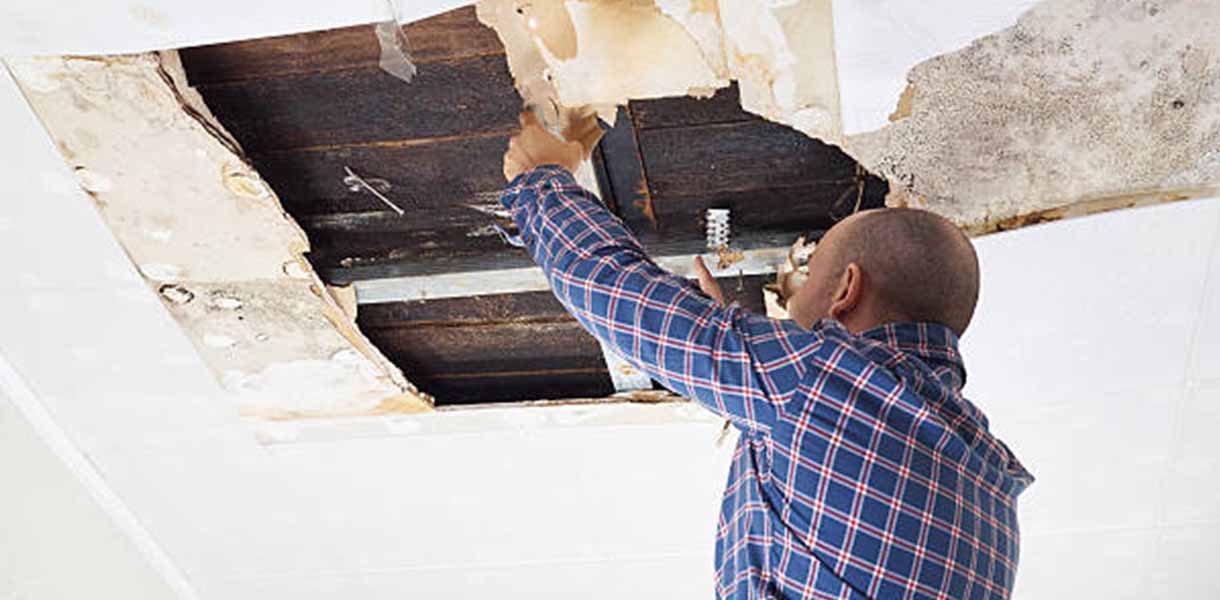Fencing is a fantastic feature. They provide privacy from neighbors, secure yard spaces so pets or boisterous kids can’t get out, and keep stray animals out of your yard. Pets can escape through a hole under a fence.
Additionally, it might allow wild animals to enter a house. A gap under a gate or a fence can be repaired using a variety of different materials and methods.
How It Happens
The question is, how do gaps develop at the base of a fence? There are several possible offenders. Simple terrain in your yard could be the first factor.
The fence might not have been flat, to begin with, if it were on an incline. In time, soil can also shift, which can move or tilt fence posts and leave a gap.
Dogs enjoy digging, as was earlier mentioned. They might try to dig a hole under the fence to explore, particularly if they hear another animal in your neighbor’s yard.
If your fence is older, there might be a problem with the fence’s actual construction. For instance, consider wood. Based on the temperature and humidity, this material expands and contracts. Additionally, it has a tendency to rot, which makes it simpler for pieces to separate from the fence.
How To Fix A Gap Under A Fence
Fencing gaps can be sealed in a variety of ways. In general, how effective they depend on which fencing options a particular homeowner chooses.
Galvanized Steel Mesh
For filling gaps under a fence, hardware cloths are incredibly efficient. Thus, using a hardware cloth should be the first option on your list of possible fixes if you have a gap that needs to be filled.
- First, determine the length of each fence panel. It will give you a good idea of the size that you should buy, so do it before you even buy the hardware cloth.
- Dig along the gap to make space for the hardware cloth.
- You can insert the cloth about 3 inches into the ground by digging a trench in the area and clearing some dirt from it.
- Put one end of the hardware cloth into the trench once you have finished digging.
- The other end of the wooden fence should be installed using strong staples.
- Put a layer of dirt back into the trench. And after you’ve filled it, tamp the dirt down. Make sure the fabric is securely fastened underground by packing the soil with a shovel.
Timber Planks
Cedar has excellent environmental resistance, is long-lasting, and is resistant to termites. If you have a gap in your wooden fence, cedar pickets are a great alternative because they share the same qualities.
- Cut the wood planks to the proper length to fill the gap.
- Place them horizontally
- To fasten them over the empty space, use a drill.

Concrete
To fill in gaps under chain-link or other types of fencing, you can also use concrete wall stones or blocks.
Here are the steps you need to take.
- Start by excavating directly beneath the opening.
- Use a tamper or a hoe to level and tamp down the layer of dirt at the bottom of the trench
- Pour some sand into the trench to make a sturdy base for the blocks. A better base can be made by filling the trench with enough sand to make it about an inch thick.
- Lay the concrete blocks on the sand, then add successive layers in a staggered fashion until you have filled the space entirely.
- Finally, use the dirt you dug up to prepare the trench to reinforce the concrete wall.
Washed River Rocks Or Decorative Stones
Decorative stones and washed river rocks are a good choice if you want a quick fix that doesn’t require digging.
To achieve the best outcomes:
- Start by collecting ones that are at least more than an inch in diameter
- Place them in a pile on one side of the fence. Repeat this until the unwanted space is filled.
- When you’re finished, take a bow rake and spread them over the opening evenly.
When it comes to filling in gaps, wall stones can be just as effective as a river or decorative stones.
Chicken Wire Or Wire Mesh
Chain-link or wood fences can be patched up with wire mesh or chicken wire.
You must take the next action in order to close the gap.
- Make a trench first.
- Make sure to cut a piece of wire mesh that can cover the trench’s depth and gap height.
- To the underside of the fencing, fasten chicken wire or wire mesh. When working with a wood fence, staples can be used.
- Fill the trench back up with the soil you dug out, leaving part of the wire in the trench and the other end firmly fastened to the bottom of the fence. This will hide the bottom part of the wire and make it harder to dig under the fence. Use a shovel to accomplish this.
- For added support and to deter digging, scatter a few rocks over the filled trench.
Hardware Cloth
- The fence panel’s width should be determined. Wear leather work gloves, and cut a length of 2- or 3-foot-high hardware cloth with side cutters to match the width of the panel
- Make a small incision along the gap to place the cloth about two or three inches below the gap in the ground. For instance, if the gap is 10 inches deep, dig a trench that is 13 inches deep and 4 inches wide using a weeder hoe or a trenching shovel.
- Fill the trench with the hardware cloth. Place the fabric up against a wooden fence, and use strong staples to attach it. For a chain-link fence, fasten the hardware cloth with UV-resistant cable ties.
- You should replenish the dirt you took out of the trench and gap. With the back of the shovel or your foot, compact the soil around the hardware cloth.
Cedar Pickets
- Height and length of the gap are measured. To match the gap’s length, cut cedar fence pickets with dimensions of 5/8″ x 5 1/2″ x 5′ using a circular saw. In comparison to cedar dimensional lumber, cedar fence pickets are less expensive and resistant to termites and deterioration.
- The cedar picket lengths should be arranged horizontally, one on top of the other. Cut two 3-foot-long pieces of cedar fence picket, for instance. To build a piece of cedar fencing that is 3 feet long and 11 inches high, lay one picket piece horizontally on the ground in front of you and place the second picket piece above the first picket piece.
Lumber 1 by 2 inches in size should be cut into 10-inch pieces. Every 8 to 10 inches, stack the pieces of lumber measuring 1 by 2 inches vertically on top of the two fence pickets that are arranged horizontally. Attach the cedar fence pickets together by inserting 1 1/2-inch wood screws into the 1 by 2-inch pieces of lumber.
- To fit the horizontal fence pickets against a wood-paneled fence and into the gap, slightly widen the opening with a shovel. To secure the wood fence to the cedar pickets, insert 1-inch wood screws. Chain-link fence wires should be wrapped with ultraviolet-resistant cable ties that have been inserted through the holes in the fence. To fasten the pickets to the fence, drill however many holes are required. To secure the pickets, tighten the cable ties.
- Any dirt you took out of the fence’s gap should be replaced. Use the back of the shovel or your feet to compact the soil.





